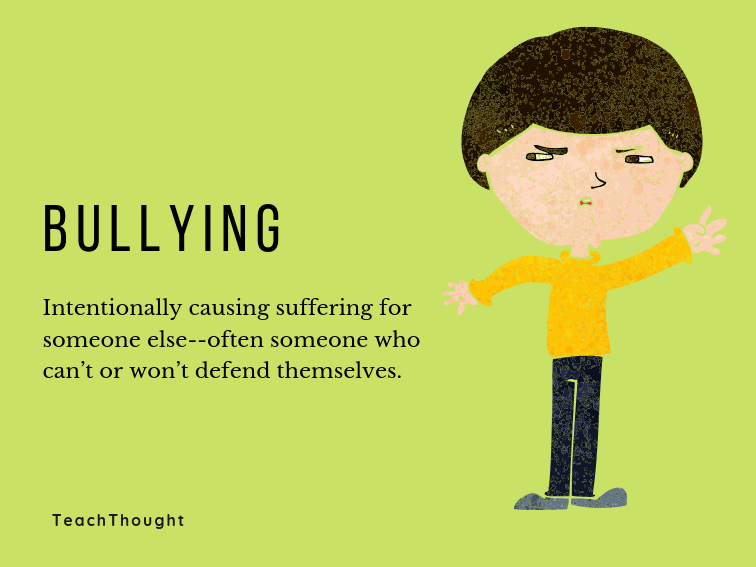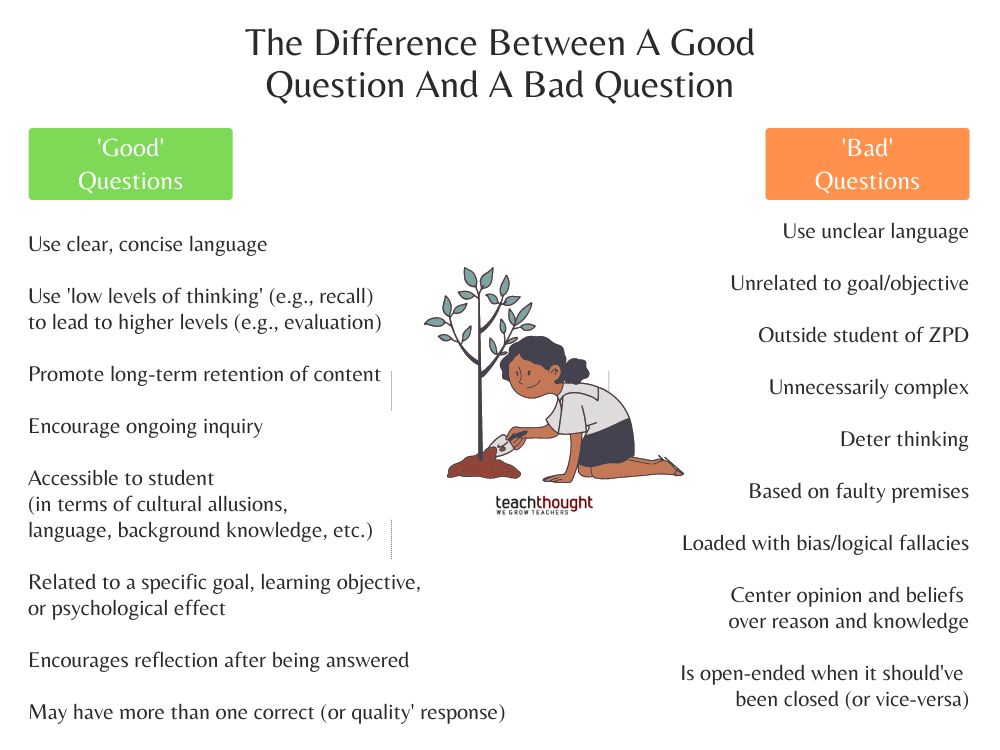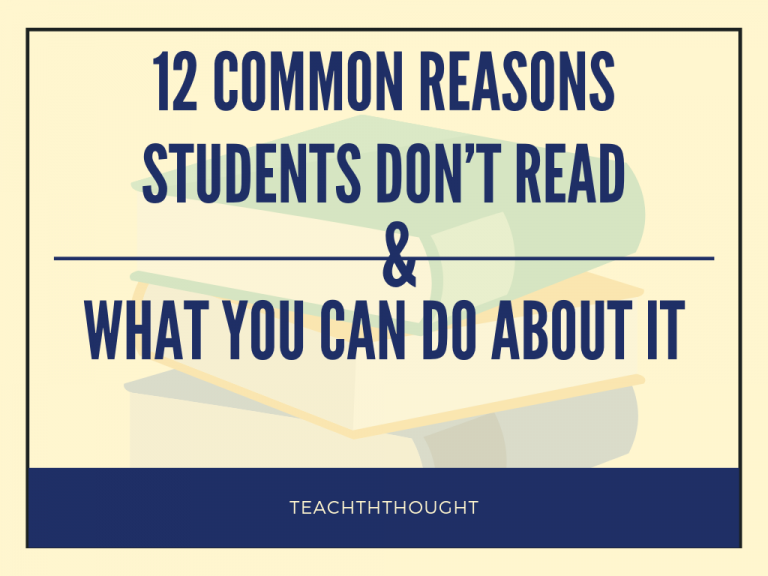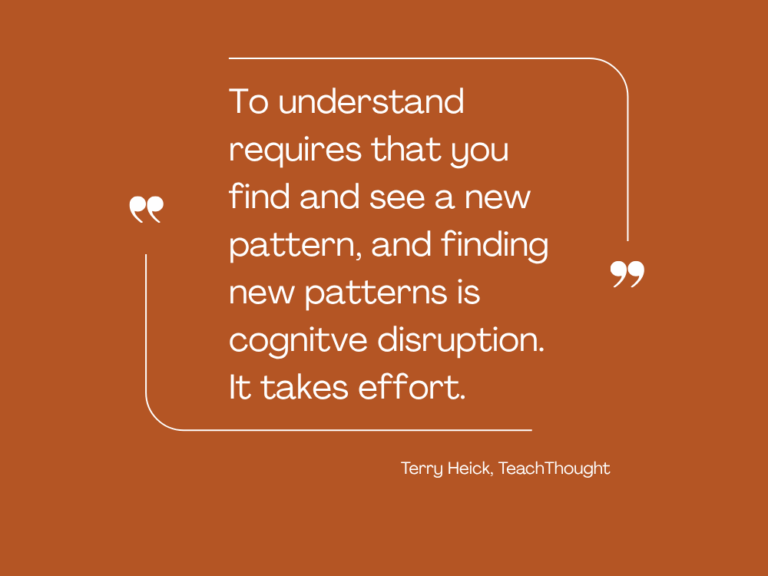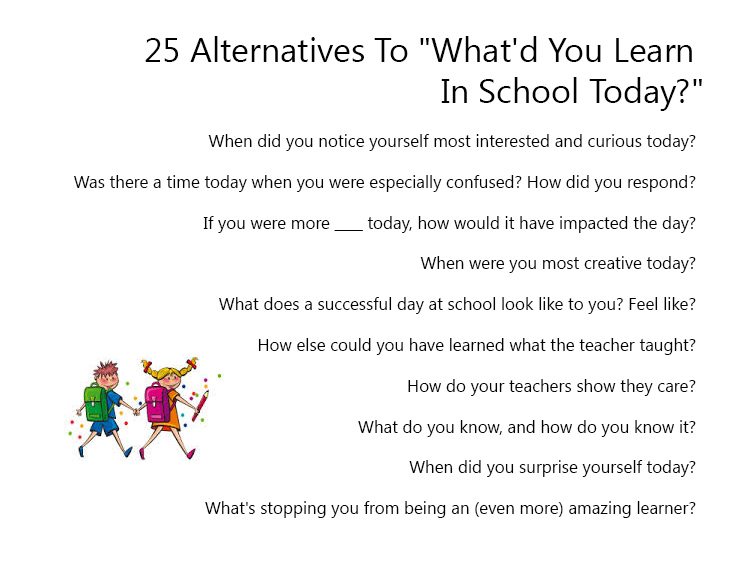
The Definition Of Bullying: A Timeless Behavior With New Tools & Technology
by Terry Heick
Preventing bullying is just as likely as preventing poverty, racism, or violence.
If we can start from this kind of humility, we may be able to improve our efficiency in dealing with and responding to it as a problem.
Of course, there is no ‘it.’ Bullying is an output and a symptom—the result of a variety of factors that manifest themselves well beyond the school. Celebration of aggressiveness and violence, pack mentalities, depression, peer pressure, lack of empathy, violence at home, insecurity, social media, a lack of role models, and more all combine with scores of other factors to produce the ugliness that is bullying.
Technology has a way of amplifying our best and worst characteristics as people, and that is true with bullying—or cyberbullying—as well. Cyberbullying is just a digital layer added to what’s gone on for years in schools, on playgrounds, in workplaces, and even with professional athletes. In fact, there is now impressive nuance available when bullying through technology.
For one, there is the visibility and scale of it all. Make one comment on an Instagram thread, and every single person afterwards sees that comment, as well as any reply. Same with facebook, tumblr, and twitter if you dig a little. The snide comment in the hallway that was only heard by four of five people has been replaced by the snarky subtweet that has everybody taking screenshots.
Which brings us to the relative permanence of digital fare. Once it’s emailed, posted, liked, tagged, texted, or otherwise flung out into the digital ether, it’s “loose.” Gone. No longer under the sender’s control. Social media is designed to make people seen and heard, which means it captures—and amplifies–everything. In fact, certain apps, like Snapchat, are built around this very idea of permanence vs impermanence as some kind of escape of accountability.
The Definition Of Bullying
And then there’s the nuance I mentioned, starting with passive-aggressive behavior that so many social media platforms seem designed for. The aforementioned subtweets, ‘sliding in and out of people’s ‘mentions’ on twitter, tagging—and more acutely, failing to tag people that very well ‘should’ve’ been tagged, failing to respond to tags in a timely fashion, following and unfollowing, friending and defriending, and more all create an ecology that breeds bullying.
Which brings up an interesting point: What does it mean to bully? And more broadly, what kind of response makes sense to get closer to the roots of the problem?
Bully education should probably be a big part of it, in large part built around a clear, modern definition for bullying and all of its degrees.
Stopbullying.gov defines bullying as “unwanted, aggressive behavior among school aged children that involves a real or perceived power imbalance. The behavior is repeated, or has the potential to be repeated, over time.” That’s not a very kid-friendly definition, so that’d be a good start—a definition for bullying that the people who have trouble understanding it can use. “Being mean to people that can’t or won’t defend themselves” may be too flimsy-sounding, but it’s clear.
Maybe some compelling and authentic examples, include passive-aggressive bullying? The iconic bully takes lunch money, grabbing pint-sized kids by their ankles, turning them upside down, and shaking out their change. Certainly this still happens, and it’d be a stretch to say ’21st-century bullying’ is always digital. But updating how we define bullying, what it looks like, where it happens, and some basic strategies for response may be a good first step.
If nothing else, we might work to remove the stigma from being bullied. Everyone, at some point, has been bullied. There is no reason for shame. Which brings us to a key takeaway here—transparency. We can’t prevent bullying, but we can make it crystal clear that it:
- Happens
- Has varying degrees, behaviors, and contexts
- Isn’t always obvious
- Is not okay
- Is correctable
- Takes a village to correct
Highlighting the causes and behaviors instead of demonizing the bullies themselves could be one strategy. (The same approach, incidentally, may benefit how we treat felons.)
While there is some kind of justice in calling out and ridiculing bullies, that’s a lot like screaming at children for screaming at other children. Your reaction to any of this is a matter of personal philosophy and politics, but the big idea is to address the ecology that produces the problem, rather than playing whack-a-mole every time it surfaces. It’s not easy, but neither is spending two hours every morning responding to the previous evening’s middle school facebook blow-up.
The tone and terms of our social interactions are new, and require newly simplified thinking to understand.
Conclusion
Educators have taken many approaches to solving the problem of bullying, from making it ‘uncool’ to bully, to scary punishments, to teaching tolerance. Tolerance is part of the issue, but even that starts with highlighting differences between people, and suggests that one ‘tolerate’ the other.
‘Stopping bullying’–and racism and sexism and dozens of other examples of how humans can be cruel to one another consistently enough to require a word for it–is impossible. It’s ambitious to try, but ambition is one of education’s biggest sins. As the frequency and anonymity of our interactions increase through digital tools, so does our capacity to bully in more subtle, passive-aggressive ways than ever before. This is not limited to children, either–you’ve probably felt it yourself on twitter or facebook or instagram or the comment’s section of a blog.
Digital citizenship first depends on a more fundamental sense of citizenship–being a human being, then carrying that to digital spaces. We could do worse than helping students to reflect on these interactions (which would have the side-effect of slowing them down). Before each interaction, thinking about a few simple questions would change everything.
Who is this person?
What is their history?
How do we connect–how do our similarities and differences affect our feelings towards one another? How do our differences potentially strengthen our interaction?
How can I help them grow?
What do they need from me, and I from them?
This is digital citizenship in question form. As long as this kind of thinking is absurd, our capacity to hurt one another will be as well. The new thinking here, then, isn’t new at all, but rather reflects a need to return to that which is simple in the face of circumstances which seem more complex than they actually are.
So what’s a simple definition for bullying? Intentionally causing suffering for someone else–often someone who can’t or won’t defend themselves. The same as it’s ever been. Today, there are just more tools to make it happen, and new opportunities for more subtle and nuanced bullying. But the behavior itself hasn’t changed.
It’s what happens when one person fails to care for another.
A version of this post was written by Terry Heick for Edutopia; The Definition Of Bullying; How Bullying Is Changing
